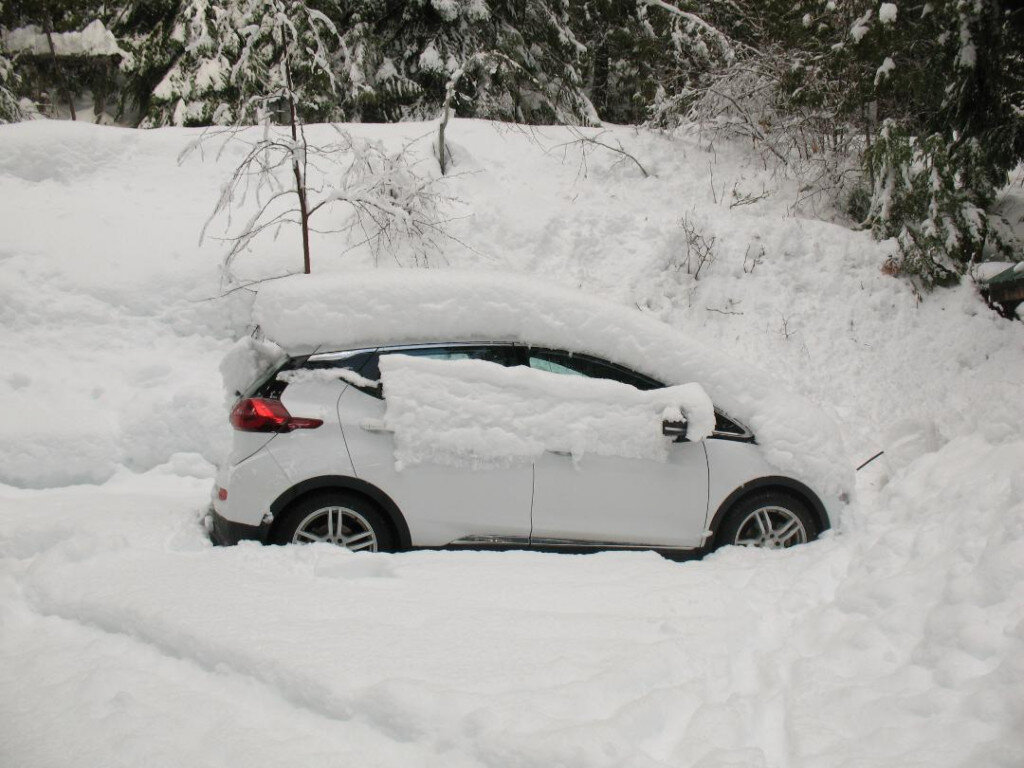Monthly Myth: EVs don’t work In the cold
Weather issues simply don’t warrant avoiding EVs
By Tim Benford: President of Drive Electric Dayton and Past Vice-President of Electric Auto Association
As we know from GM’s Superbowl advertisement, Norway is crushing the USA in electric vehicle (EV) sales, followed closely by Sweden and Finland. If electric vehicles (EVs) don’t work in the cold, why would they be top sellers in these northern climates?
Similarly, in the USA there’s also been an uptick in EV sales in states like Colorado, Massachusetts, and New York, all of which have ambitious carbon-reduction goals and cold winters. How can this be?
Simple. Once owners learn how EVs react to temperature swings, they can manage their vehicle energy usage and experience almost no impact on driving utility and enjoyment.
Yes, a warm battery is a happy battery
At the heart of every EV is its lithium-ion battery, and like all batteries, it has an ideal operating temperature where the most energy is delivered and the least charge is lost. Indeed, cold temperatures slow chemical reactions within a battery, reducing power output and threatening its life. But electric vehicles are designed to protect themselves with onboard heaters to warm the battery.
How exactly do EV batteries respond to temperature change?
An Automobile Association of America study released in February, 2019 tested five EV models in 20 degree and 95 degree Fahrenheit temperatures. The cars included a 2018 BMW i3, 2018 Chevy Bolt, 2018 Nissan LEAF, 2017 Tesla Model S 75D, and 2017 Volkswagen e-Golf. When compared with driving in 75 degree weather, the study found:
● At 20 degrees: EVs experienced a 12% decrease in driving range without the heater; a 41% decrease with the heater.
● At 95 degrees: EVs experienced a 4% decrease in driving range without the AC; a 17% decrease with the AC.
So. the real culprit for losing range in hot or the cold weather is use of the heating, ventilation, and air conditioning (HVAC) system. This concept holds true for gas and diesel-powered vehicles too.
Learning from a trip in the cold
Jason Fenske of Engineering Explained reported on the functioning of his Tesla Model 3 Performance on two recent 2,000 mile trips covering the same route, one in hot weather and one in cold. On the summer run, he used 285 Watt/Hrs per mile and in winter he used 338 Watt/Hrs per mile. His average range in the heat was 250 miles, and in the cold, 212 miles. That is a difference of 18.6%.
Fenske found himself adopting tactics to optimize energy use on a cold weather trip. When stopping at Tesla Superchargers, he charged to a level where he could comfortably reach the next Supercharger (e.g., 15 minutes of charging). This took less time than a fuller charge, and eliminated the worry of running out. And he was able to drive at a higher speed and arrive with range to spare.
One benefit of this strategy was that charging was very quick due to the low battery charge, and Jason was stopping the charge before it would slow down at around 50% full.
Remarkably, he found that this strategy did not add significant time to his journey. On the winter run, he stopped 18 times for an average of 25 minutes. In the summer, he made 12 stops for an average of 39 minutes. He did recommend charging up at the end of the day while the battery is warm, versus charging slowly in the morning before departure with a cold battery.
Finally, in 30 hours of driving each way, he spent 8.1 hours charging in winter and 7.9 hours charging in summer. Very little difference.
Cold weather tips
The following are specific cold weather tips for EVs:
● Use accessories judiciously: HVAC and entertainment systems use energy. Using seat warmers instead of the cabin heater can save energy and extend range.
● Use the “economy mode”: Many EVs come with an "economy mode" or similar feature.
● Plan ahead before driving: Pre-heating or pre-cooling the cabin of an all-electric or plug-in hybrid EV while still plugged in can extend electric range.
● Avoid hard braking and anticipate braking: This allows the regenerative braking system to recover and store energy from the vehicle's forward motion.
● Observe the speed limit: Efficiency usually decreases rapidly at speeds above 50 mph.
Myth within a myth
By the way, contrary to misconceptions, it is not dangerous to charge your EV in the rain. You will not be electrocuted. Tesla, Electrify America, Blink, Chargepoint and others would not be in business if charging was risky.
Conclusion
While it is true that heat and cold affect all vehicles, it is not a reason to discard the idea of selecting an EV as your next ride! Armed with the above knowledge, you will become an expert in how to optimize the efficiency of your battery by wise use of the HVAC system and selection of your charging strategy. If you are lucky enough to charge your EV in your garage overnight, and can set the timer to warm the battery before you leave the next morning, cold weather won’t even cross your mind!

